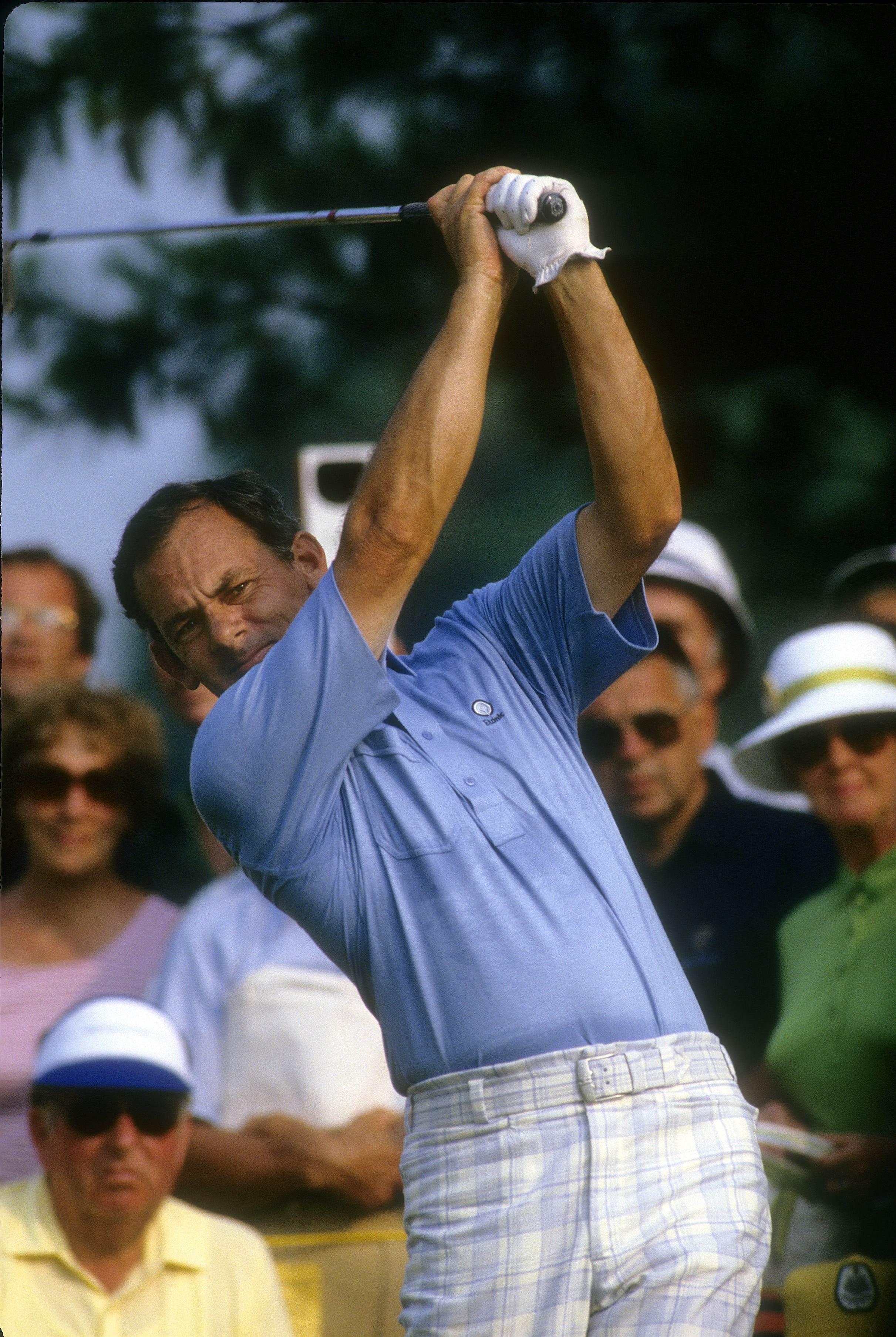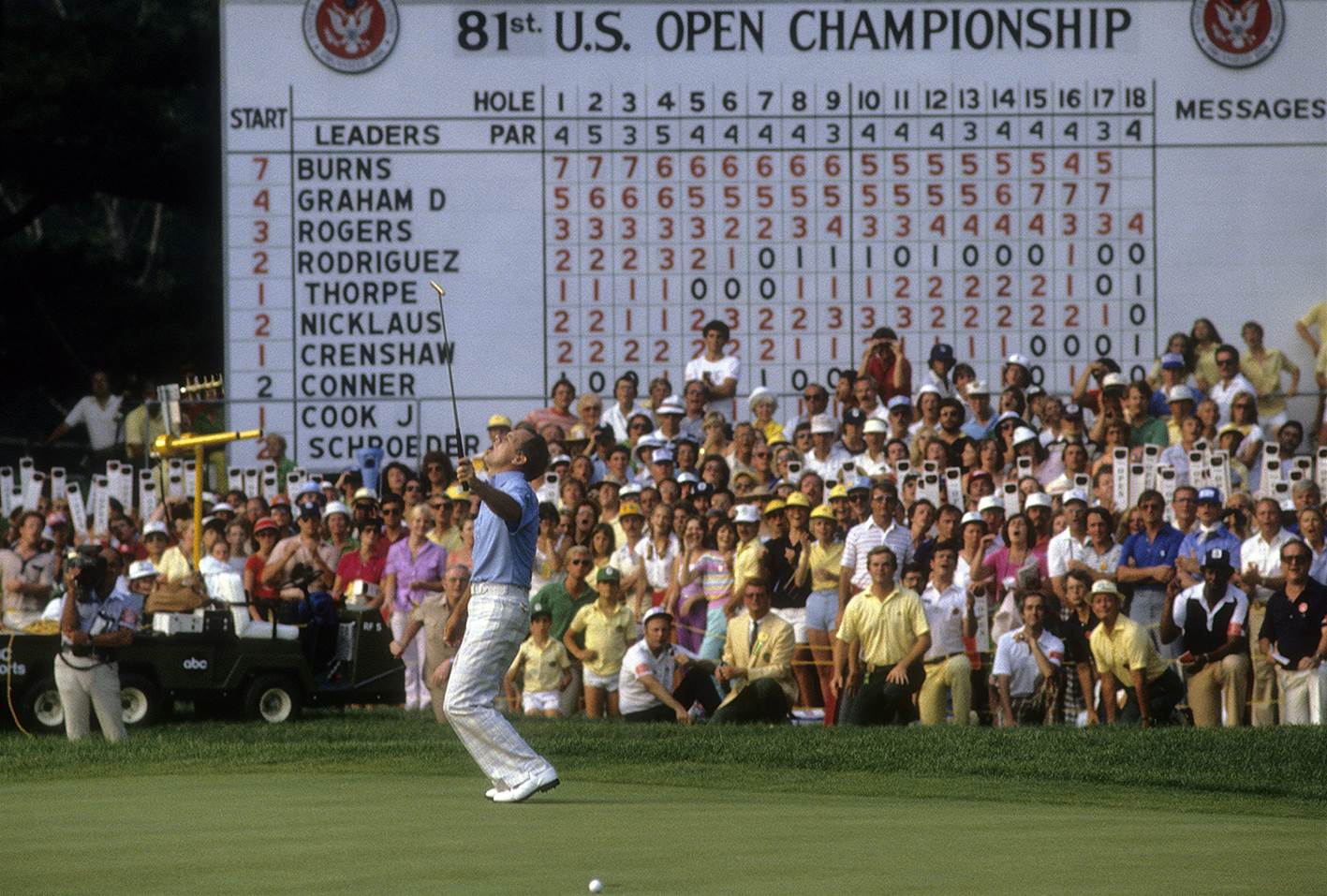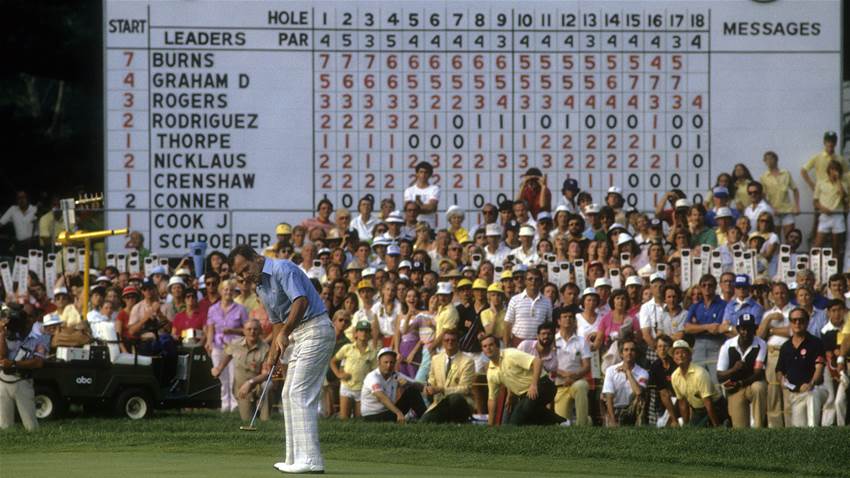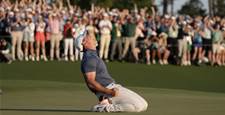David Graham had a simple philosophy when he arrived in Pennsylvania for the 1981 US Open Championship: “Hit fairways and greens and see what happens.”
Six days later, he left with the coveted US Open trophy in his luggage and the glowing memory of having played the “near perfect” round to win.
It had been 10 years since Jack Nicklaus and Lee Trevino battled for four days around the Merion course to finish equal first at even par. Trevino later won the 18-hole play-off after the infamous ‘rubber snake incident’ on the 1st tee.
 A decade on Graham, like Trevino, figured anything on “the short grass” would keep any player in contention. The American-based New South Wales-born Graham plotted his way around the narrow Merion layout for the first three rounds, carding 68-68-70, but still it wasn’t good enough to lead going into Sunday.
A decade on Graham, like Trevino, figured anything on “the short grass” would keep any player in contention. The American-based New South Wales-born Graham plotted his way around the narrow Merion layout for the first three rounds, carding 68-68-70, but still it wasn’t good enough to lead going into Sunday.
That honour belonged to American George Burns, who had holed a few more putts, particularly on day two, and led by three strokes. Burns’ 54-hole aggregate of 203 was at the time the best in US Open history.
“Merion isn’t the type of golf course, and neither is the US Open Championship a tournament, where you try intentionally to play aggressively,” Graham told me in an exclusive 1996 interview to celebrate the 15th anniversary of his victory. “The width of the fairways and severity of the greens can penalise a whole range of shots. You have got to develop a game plan on Thursday and stick to it.
“Merion isn’t a golf course you can attack. You just have to plod along. When you are playing the US Open, par is always a good score so you play a style of game that’s very conservative … it’s very controlled or regimented.
“I had a game plan and it was basically ‘on the fairways and the greens’, and Merion was that type of golf course.”

Despite brimming with confidence, not even Graham could have predicted he would find the model of consistency every golfer searches for when teeing off in the final round. The large gallery was blessed with seeing one of the all-time great rounds of golf as Graham fired a three under 67 without playing a stroke he could have greatly regretted.
Graham missed one fairway, by a mere 20 centimetres, and hit 18 greens in regulation on his way to winning the title, the first Australian to do so. Burns and Texan Bill Rogers, the 1981 British Open Champion, finished three shots adrift.
The legendary Ben Hogan, who won the 1950 US Open at Merion with a seven-over-par 287, later described Graham’s final round as “near perfection”.
“I never disagree with Mr Hogan,” Graham said happily. “I am flattered and happy that he even knew about it.
“I got a phone call from Mr Hogan and he invited me to have lunch with him and it was very enjoyable. I was very honoured.”
“Players that play the Tour often have extremely good ball striking rounds but it depends on the circumstances in which you have it." - David Graham.
Years after winning the title, Graham was still being stopped by fans wanting to talk about ‘that’ round.
“I would say the memory of that round will be vivid with me for the rest of my life,” he said. “A lifetime of hard work came true in one afternoon.”
Building on a solid one under for the front nine, he made two birdies and seven pars heading back to the clubhouse. He took the lead for the first time at the par-4 14th.
“The 14th is one of the hardest holes on the course. I hit driver onto the fairway and nailed a 7-iron to about six feet and made the putt,” Graham said. “That putt put me one in front of George Burns and feeling good.”
His birdie at the next, the narrow 346-metre 15th, extended the margin. “I needed to hit the fairway so I hit a 1-iron. I then hit an 8-iron pretty close and made the putt,” Graham recalled. The then 35-year-old parred the remaining three holes to win his second major championship in less than two years having clinched the 1979 US PGA Championship.
Graham says he was so fixed on the task of remaining mistake free on the closing holes that he didn’t realise a birdie at the 72nd hole would have equaled Jack Nicklaus’ then US Open aggregate record.
“When you’re trying to win a major championship you’re not thinking of records, you’re just trying to win. I didn’t learn about the Nicklaus record until after the tournament.”
Graham said he has probably had days where he hit the golf ball just as well but not in the same circumstances.
“Players that play the Tour often have extremely good ball striking rounds but it depends on the circumstances in which you have it,” he said. “Most of the time it takes a victory for that golf to be recognised. There is a lot of great golf played on Thursdays and Fridays but if it doesn’t help win the tournament it doesn’t get recognised.”
Next month will mark 39 years since Graham turned the golfing world on its ear and perhaps came as close as anyone has to playing perfection.
Related Articles

Review: Clearwater Golf Club

Review: Omaha Beach Golf Club













